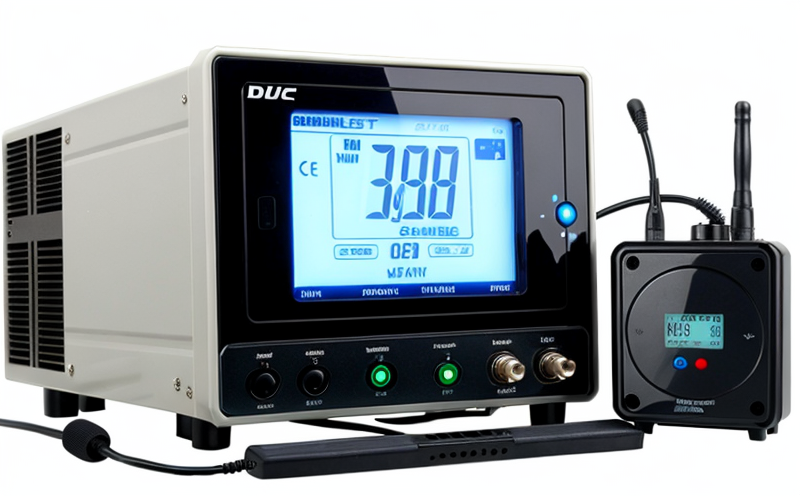3GPP TS 36 104 LTE Base Station RF Testing
The 3rd Generation Partnership Project (3GPP) Technical Specification 36.104, which defines the physical layer of Long Term Evolution (LTE), is crucial for ensuring the interoperability and performance of LTE base stations across different vendors. This test focuses on evaluating the radio frequency (RF) characteristics of an LTE base station to ensure it meets the stringent requirements outlined in this specification.
RF testing plays a vital role in guaranteeing that the base station can reliably communicate with user equipment, such as smartphones and tablets. The goal is not only to verify compliance with 3GPP standards but also to assess the device's performance under various environmental conditions, including interference from other wireless devices, signal strength variations, and bandwidth efficiency.
The testing process involves several critical steps that are essential for ensuring thorough validation. First, the base station must be configured according to the specific parameters defined in 3GPP TS 36.104. This includes setting up the modulation schemes, carrier frequencies, bandwidths, and antenna configurations as per the specification.
Once configured, extensive RF measurements are conducted using specialized test equipment such as spectrum analyzers, network analyzers, and signal generators. These instruments provide detailed insights into the RF performance of the base station by measuring key parameters like adjacent channel power ratio (ACPR), error vector magnitude (EVM), signal-to-noise-and-interference ratio (SINR), and others.
A significant aspect of this testing is the evaluation of the base station's ability to handle multiple users simultaneously. This involves setting up scenarios where the device must manage a varying number of active connections, ensuring that it can maintain acceptable data rates and quality for all users without degradation in service.
The test also considers the impact of environmental factors such as temperature, humidity, and altitude on the base station's RF performance. By simulating these conditions through controlled testing environments, we ensure that the device remains robust and reliable under real-world operating conditions.
Finally, compliance with international standards is paramount in this testing process. The 3GPP specifications are widely recognized globally for ensuring interoperability and quality of LTE networks. Adherence to these standards not only enhances the user experience but also ensures seamless integration within national and international wireless communication systems.
| Key RF Parameters | Description |
|---|---|
| ACPR | Measures interference to adjacent channels, ensuring compliance with regulatory requirements. |
| EVM | Assesses the accuracy of the transmitted signal, critical for maintaining high data quality. |
| SINR | Evaluates the signal strength relative to noise and interference, crucial for reliable communication. |
| Bandwidth Efficiency | Metric that indicates how effectively a given bandwidth is used, important for optimizing network performance. |
In summary, 3GPP TS 36.104 LTE Base Station RF Testing ensures that base stations meet the highest standards of quality and reliability, providing a solid foundation for robust and interoperable wireless networks.
Scope and Methodology
- Configuration according to 3GPP TS 36.104 parameters.
- RF performance measurement using spectrum analyzers, network analyzers, and signal generators.
- Evaluation of multi-user scenarios to ensure seamless communication.
- Simulation of environmental factors like temperature, humidity, and altitude.
The scope encompasses both laboratory-based testing in controlled environments and field trials under real-world conditions. This comprehensive approach ensures that the base station can perform reliably across a wide range of environments and user demands.
Why Choose This Test
Selecting 3GPP TS 36.104 LTE Base Station RF Testing is essential for several reasons:
- Ensures Compliance with Global Standards: By adhering to 3GPP specifications, you guarantee that your base station will be interoperable and meet international standards.
- Enhances User Experience: Rigorous testing ensures high-quality service for users, minimizing dropouts and improving data rates.
- Risk Mitigation: Early identification of potential issues through thorough testing reduces the risk of costly field failures and customer dissatisfaction.
- Competitive Advantage: Demonstrating compliance with leading standards positions your product favorably in the market, attracting more customers.
In today's highly competitive telecommunications landscape, these factors are critical for maintaining a strong market presence and ensuring long-term success.
International Acceptance and Recognition
- The 3GPP TS 36.104 specification is recognized worldwide by regulatory bodies and industry stakeholders.
- Australia, United States, European Union, and other regions have adopted these standards for LTE network deployments.
- Compliance with these specifications ensures that your product can be used seamlessly across different geographical areas.
The widespread adoption of 3GPP TS 36.104 in the global market highlights its importance and reliability, making it an indispensable part of any LTE base station development process.





